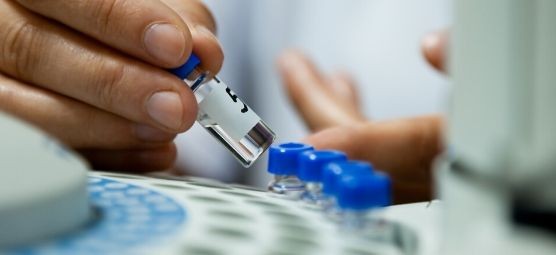Chromatography in forensic science is a given, an industry staple, for the accurate screening of substances – from toxins and drugs to explosives.
Chromatography has become a widely accepted method for identifying compounds in evidence during forensic research. While gas chromatography is one of the most common methods, forensic technicians may also choose high-performance liquid chromatography, planar chromatography, or thin-layer chromatography. In this guide we’ll differentiate all the types of chromatography used in forensics, their uses, and how it helps forensic scientists make decisions.
A Brief Refresher on Chromatography
Before we dive into the different types of chromatography for forensic science, we must understand how chromatography works. In general, chromatography is the process of separating a mixture into its various components so that they can be easily identified. Each type of chromatography involves a mobile phase passing through a stationary phase to separate the compound. The stationary phase may be housed within a column, such as in gas chromatography or be a simple plane, such as in planar chromatography. A mixture or compound is injected into a solvent and is then passed through the stationary phase. This process allows researchers to measure retention time and identify components of a mixture. How does chromatography apply to forensic science?
Gas Chromatography
As one of the most common methods, gas chromatography (GC) has several uses within the forensic process. This type of chromatography uses gas as the mobile phase to move the injected substance toward the stationary phase in order to analyze the mixture by measuring their retention time. This helps forensic lab technicians identify several factors. For example, one of the most common uses of gas chromatography in forensics is for identifying and determining a pathology conclusion, such as fluids present in a body, analyzing blood samples or identifying poisons present. In addition, these machines can help forensic scientists investigate crimes, such as arson, by testing different compounds to find flammable liquids.
High-Performance Liquid Chromatography
Instead of using gas as the mobile phase as in gas chromatography, this method of chromatography uses a liquid mobile phase. High-performance liquid chromatography (HPLC) machines push substances through using a high-pressure pump. These machines help forensic scientists analyze volatile substances such as gunpowder residue, fibers, and toxins. One of its most common uses is to determine materials used in explosives. Additionally, many explosive materials can wear down during the gas chromatography methods. Because a high-pressure pump is moving the substance through liquid instead of gas, it keeps the substance in its most pure state to ensure accuracy.
Planar Chromatography
Forensic scientists employ two types of planar chromatography: paper chromatography and thin-layer chromatography. While they’re similar in that both have the mobile phase as a solvent, both have different principles behind each method. Let’s start with paper chromatography. The process includes a strip of paper—in this case the stationary phase—that’s placed into the solvent to separate the compounds by passing through the paper. This method can be helpful for analyzing fingerprints and some bodily fluids.
The process of thin-layer chromatography (TLC), unlike the paper stationary phase, is characterized by a thin-layer cell. While it’s not quite as versatile as gas or high-performance liquid chromatography, it can be a reliable source for analyzing explosives, inks, and dyes.
How Do Forensic Scientists Make Decisions Based on Chromatography Results?
In gas chromatography, lab technicians can clearly identify and analyze substances since they’ll separate using the stationary and mobile phase. Similarly, high-performance liquid chromatography will be ideal if they need a quick answer, as the high-pressure pumps significantly speed up the process. In each of these methods, the injected mixture is separated from the solvent, which allows forensic scientists to gain specific results.
On the other hand, there are benefits to using one of the planar chromatography methods. For example, if a lab trying to determine if fingerprints match a crime scene, paper chromatography may be the most efficient choice. Another common use for paper chromatography is ink analysis. For example, forensic scientists can analyze a check at a bank for forgery. This method of chromatography allows lab technicians to separate the pen ink from the document to determine if the ink matches what the suspect had with them.
Chromatography in forensic science has many applications, from toxicology to pathology to crime scene investigations. Forensic laboratories use chromatography applications every day and must have equipment that performs well and produces accurate results for quality analysis.
If your forensic lab needs to update or add to your current equipment, including gas chromatography (GC), HPLC, accessories, and more, GenTech Scientific is here for all of your lab equipment needs. GenTech Scientific specializes in providing quality refurbished lab equipment, and with our industry expertise, we stand behind our products and services, offering warranty coverage on our products. We specialize in premium refurbished GC equipment, HPLC machines, and mass spectrometry. We also offer service and repair on lab equipment, even if you didn’t buy it from us. Our knowledge and expertise have made us a market leader in the industry for service and repair since 1996. Contact us today at 585-492-1068 to speak with a lab solutions specialist regarding your lab’s needs.






